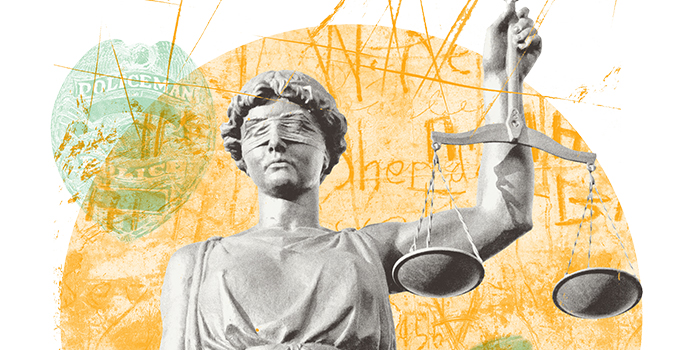The American criminal legal system is a vast and intricate network, often subject to intense public scrutiny and passionate calls for reform. With each new administration, there are significant discussions—and often ambitious promises—about how the president and the federal government will reshape the landscape of justice. However, understanding the true scope of presidential authority and the limits of federal reach is crucial for effective advocacy and informed citizenship. This report delves into where the power lies, where influence can be exerted, and where the federal government’s authority truly ends, providing a vital primer for anyone committed to meaningful, sustainable change within our justice system.
Where Federal Power Holds Sway: Direct Control and Executive Authority
When it comes to the federal criminal legal system, the President and the federal government wield substantial direct power. This sphere primarily encompasses federal crimes, federal courts, and federal correctional facilities.
- The Department of Justice (DOJ) and Federal Prosecution: The President, through the Attorney General and the Department of Justice, has direct oversight over federal law enforcement and prosecution. This includes setting prosecutorial priorities for federal offenses, influencing drug enforcement strategies, and directing investigations into national issues. Changes in leadership at the DOJ can lead to significant shifts in how federal laws are enforced and who is targeted for federal prosecution.
- Federal Prisons: The Bureau of Prisons (BOP), a federal agency, manages the nation’s federal correctional institutions. The President, through the Attorney General, has direct control over policies, conditions, and operations within these facilities. This includes decisions regarding rehabilitation programs, solitary confinement, and even the use of contract facilities. For instance, shifts in policy regarding the use of privately-run facilities for federal inmates directly fall under federal purview. To understand more about the role of private entities within the correctional landscape, delve deeper into our resources on private prisons.
- Pardons and Commutations: One of the most unique and direct powers of the President is the ability to grant pardons and commutations for federal offenses. This executive clemency can overturn convictions, reduce sentences, or forgive past offenses, offering a powerful mechanism for individual justice or broader policy shifts.
- Judicial Appointments: The President nominates federal judges, including those for the Supreme Court, appellate courts, and district courts. While these appointments require Senate confirmation, the President’s selections can shape the philosophical leanings of the federal judiciary for decades, influencing interpretations of law and sentencing practices.
- Federal Sentencing Guidelines: While federal judges have discretion, they operate within federal sentencing guidelines, which are largely influenced by legislative acts and, to some extent, executive branch policies.
Federal Influence: Leveraging Resources and Setting Standards
Beyond direct control, the federal government possesses considerable influence over state and local criminal legal systems, primarily through funding mechanisms and policy guidance.
- Grants and Incentives: The Department of Justice, along with other federal agencies, distributes billions of dollars in grants to states and local jurisdictions for law enforcement, correctional facilities, drug treatment programs, and crime prevention initiatives. These grants often come with conditions or incentives that encourage states to adopt specific policies or practices. For example, federal funding can be tied to data collection, adherence to certain policing standards, or the implementation of alternative sentencing programs.
- Policy Frameworks and Best Practices: The federal government can issue guidance, conduct research, and promote “best practices” in areas like police training, community relations, and re-entry programs. While these aren’t legally binding mandates for states, they can significantly influence policy development and operational approaches at the local level.
- National Awareness and Dialogue: The President’s platform can elevate certain criminal justice issues to national prominence, sparking dialogue and encouraging states to consider reforms. This bully pulpit effect, while indirect, can be profoundly influential in shifting public opinion and legislative priorities.
The Limits of Federal Authority: Where State and Local Control Reigns
Despite the broad powers and influence of the federal government, it’s crucial to acknowledge the significant limitations, particularly concerning the vast majority of criminal cases in the United States.
- State and Local Autonomy: The overwhelming majority of arrests, prosecutions, and incarcerations occur at the state and local levels. The President and federal government have no direct authority over state police forces, local district attorneys, state court systems, county jails, or state prisons. Each state has its own distinct criminal codes, sentencing laws, and correctional policies.
- Legislative Checks and Balances: While the President can propose legislation, it is Congress that ultimately passes laws, allocates budgets, and shapes the legal framework that governs the criminal legal system. A President’s agenda for reform must navigate the complex legislative process and secure bipartisan support to become law.
- Judicial Independence: The federal judiciary, once appointed and confirmed, is largely independent. Judges interpret laws and rule on cases, providing a crucial check on both executive and legislative power. Similarly, state judicial systems operate independently of federal executive control.
- Constitutional Restraints: The powers of the federal government are explicitly limited by the U.S. Constitution, which reserves significant authority to the states. This principle of federalism means that many aspects of criminal justice, from defining common crimes to establishing court procedures, remain firmly within the domain of state and local governments.
In conclusion, while the President and the federal government possess considerable power and influence in shaping the criminal legal system, particularly at the federal level, their authority has clear boundaries. True, lasting criminal justice reform requires a multifaceted approach, engaging not just the executive branch but also Congress, the judiciary, and, perhaps most importantly, active participation and advocacy at the state and local levels where the majority of justice takes place. By understanding these distinctions, we can better direct our efforts and work collaboratively towards a more just and sustainable future for all.


